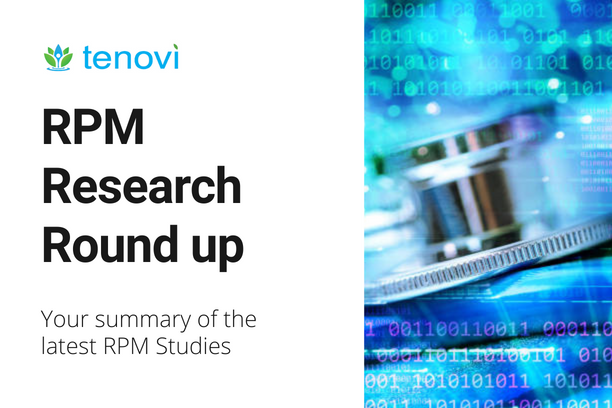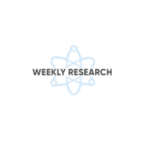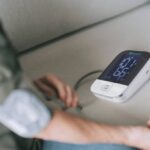In this week’s Tenovi newsletter, which summarizes remote patient monitoring studies, we examine research investigating barriers and facilitators to successfully implementing remote patient monitoring of blood pressure. Many health systems in the United States have incorporated remote blood pressure monitoring technology as a standard care method to help patients manage hypertension and other cardiovascular conditions.
Remote Blood Pressure Monitoring Overview
Remote patient monitoring technology allows for daily monitoring of vital signs with real-time data transmission through a remote blood pressure monitoring device to healthcare providers. Monitoring vital sign data can help identify triggers or patterns that exacerbate a patient’s condition, allowing for lifestyle modifications and interventions.
Furthermore, remote monitoring reduces the need for frequent in-person visits, lowering healthcare costs while maintaining close oversight and managing the condition. This also improves patients’ quality of life by enabling them to maintain independence and continue with daily activities while receiving continuous care.
Remote monitoring facilitates more accurate assessments and tailored treatment adjustments by providing healthcare professionals with continuous data streams. This leads to better disease management, improved clinical outcomes, and reduced risks of complications or hospitalizations.
Study in Remote Patient Monitoring of Blood Pressure
This article highlights a study published in PLOS ONE that explored the perspectives of healthcare professionals involved in implementing remote blood pressure monitoring across four of five London Integrated Care Systems. During the COVID-19 pandemic, the National Health Service (NHS) England introduced the BP@home initiative to provide blood pressure monitors to eligible patients for self-monitoring at home.
The researchers conducted focus groups and interviews with 20 qualified healthcare professionals, including program managers, general practitioners, nurses, and pharmacists, from four of the five London Integrated Care Systems (ICSs). The study aimed to identify barriers and facilitators to successfully implementing the BP@home initiative.
The following section outlines the key barriers that were identified in the research.
Key Barriers
Remote patient monitoring of blood pressure can enhance clinical decision-making while reducing the burden on patients and healthcare systems. With remote patient monitoring, patients take vital sign measurements with remote patient monitoring devices from home that automatically transmit those readings to their healthcare providers.
In this section, we will cover key barriers to remote blood pressure monitoring identified by qualified healthcare professionals in the study that may hinder the effective implementation of remote blood pressure monitoring programs.
- Lack of adequate resources: The healthcare professionals reported a lack of IT, human, and financial resources to support the substantial additional workload associated with the program.
- Logistical challenges: Challenges included the reception, storage, distribution, and tracking of BPMs, as well as issues with IT tools and communication channels.
- Differential engagement capacities: Engagement varied among Primary Care Networks, practices, and patients, raising equity concerns.
- Limited patient engagement: Factors like fear of losing face-to-face contact, digital literacy, and competing priorities during the pandemic impacted patient engagement.
Facilitating Factors
Despite the barriers, the research team highlighted several key areas as facilitators for remote patient monitoring of blood pressure. These are as follows.
- Integration of eligibility criteria into electronic health records: This facilitated the identification of eligible patients.
- Practice-specific processes: Adopting pragmatic, practice-specific approaches to onboard patients and manage logistics was helpful.
- Person-centered care: Prioritizing patients’ needs, understanding, and accepting the initiative was encouraged.
- Incentives and training: Providing financial incentives, clinical targets, and training based on needs assessment supported engagement.
In addition to the study’s findings, remote blood pressure monitoring offers benefits such as improved data for clinical decisions and reduced burden on patients and healthcare systems. However, equity concerns, privacy, clinical liability, and data security remain barriers, according to the study.
Remote Patient Monitoring of Blood Pressure: Key Takeaways
The authors emphasize the need for additional resources, task shifting, capacity building, and behavioral support to address barriers and facilitate widespread, equitable implementation of remote patient monitoring of blood pressure. Key recommendations include providing BPMs on prescription, engaging pharmacists in logistics, simplifying IT tools, and incorporating remote monitoring into routine practice.
To receive Tenovi’s Weekly Research Newsletter by clicking here. If you are part of a chronic care management, telehealth, or RPM software and services company, explore Tenovi RPM solutions. Book your free demo and consultation with us today.






